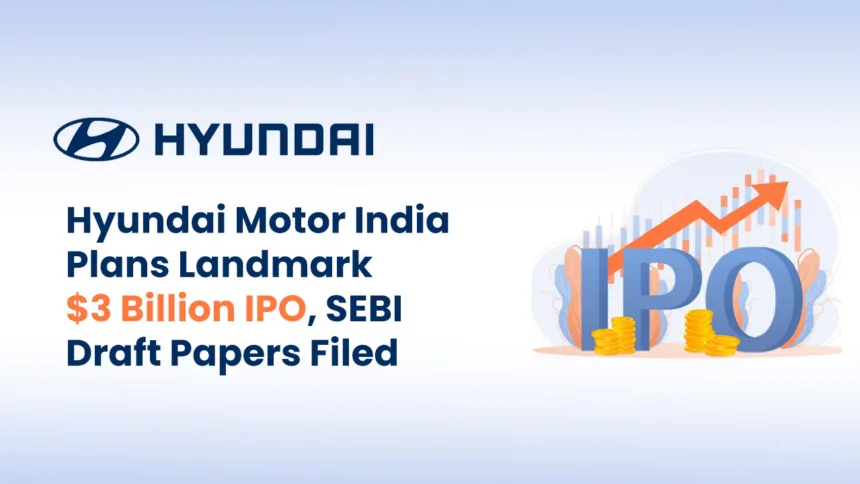Hyundai Motor India Limited (HMIL), the Indian subsidiary of the South Korean automaker, has taken a significant step towards a landmark initial public offering (IPO). The company filed its draft red herring prospectus (DRHP) with the Securities and Exchange Board of India (SEBI) on Saturday, aiming to raise around $3 billion (approximately Rs 25,000 crore). This IPO is poised to be the largest in Indian history, surpassing even the state-owned Life Insurance Corporation of India’s (LIC) $2.7 billion listing in 2022.
Hyundai Motor India, the country’s second-largest carmaker after Maruti Suzuki in terms of passenger sales volumes, ended FY23 with a robust revenue of ₹60,000 crore and a profit of Rs 4,653 crore. The firm’s remarkable financial performance underscores its position as the highest-earning non-listed car manufacturer in India.
IPO Details and Market Impact
The IPO, which will be an “offer for sale” (OFS) by the existing shareholder, will not involve the issuance of new shares. Instead, a portion of the stake in the wholly-owned subsidiary will be sold to retail and institutional investors. Hyundai Motor India plans to sell up to 142 million shares out of the total 812 million, representing a 17.5% stake, though this percentage could be adjusted downwards.
More Read
While the DRHP does not disclose specific pricing details or the exact valuation, sources suggest that Hyundai aims to raise between $2.5 billion to $3 billion at a valuation of up to $30 billion. This strategic move is expected to enhance Hyundai’s market presence and financial flexibility, positioning it strongly against competitors like Maruti Suzuki, Mahindra & Mahindra, and Tata Motors.
Strategic Expansion and Investment Plans
Over the past year, Hyundai Motor India has been meticulously preparing for this IPO. The company has outlined ambitious expansion plans, including increasing its annual production capacity in India to one million units by 2025. A significant focus will be on producing affordable electric vehicles locally, aligning with global trends towards sustainable and eco-friendly transportation solutions.
Hyundai’s commitment to the Indian market is evident from its substantial investments. To date, the company has invested $5 billion in its Indian operations and plans to inject an additional $4 billion over the next decade. This investment underscores Hyundai’s strategy to leverage the Indian market, which is the third-largest automotive market globally after China and the United States and a crucial revenue generator for the company.
Market Performance and Future Prospects
In FY24, Hyundai Motor India secured its position as the second-largest carmaker in the country, with a notable 7% year-on-year increase in total sales, reaching 63,551 units in May 2024. The company also recorded impressive export growth of 31% in the same period, with 14,400 units compared to 11,000 units a year earlier.
The decision to list on the stock exchange is anticipated to provide Hyundai Motor India with better access to capital markets, facilitating future fund-raising endeavors without heavy reliance on its parent company in Korea. This move is expected to enhance the company’s visibility, brand image, and liquidity, offering a public market for its equity shares in India.
Hyundai’s journey in India began 28 years ago, establishing its first manufacturing plant in 1998 and a second one in 2008. Over the years, the company has consistently expanded its portfolio, currently offering 13 models across various segments.
Conclusion
Hyundai Motor India’s forthcoming IPO marks a historic moment for the company and the Indian automotive industry. As the company gears up to list on the stock exchange, it not only aims to fortify its market position but also to unlock new growth opportunities, thereb












